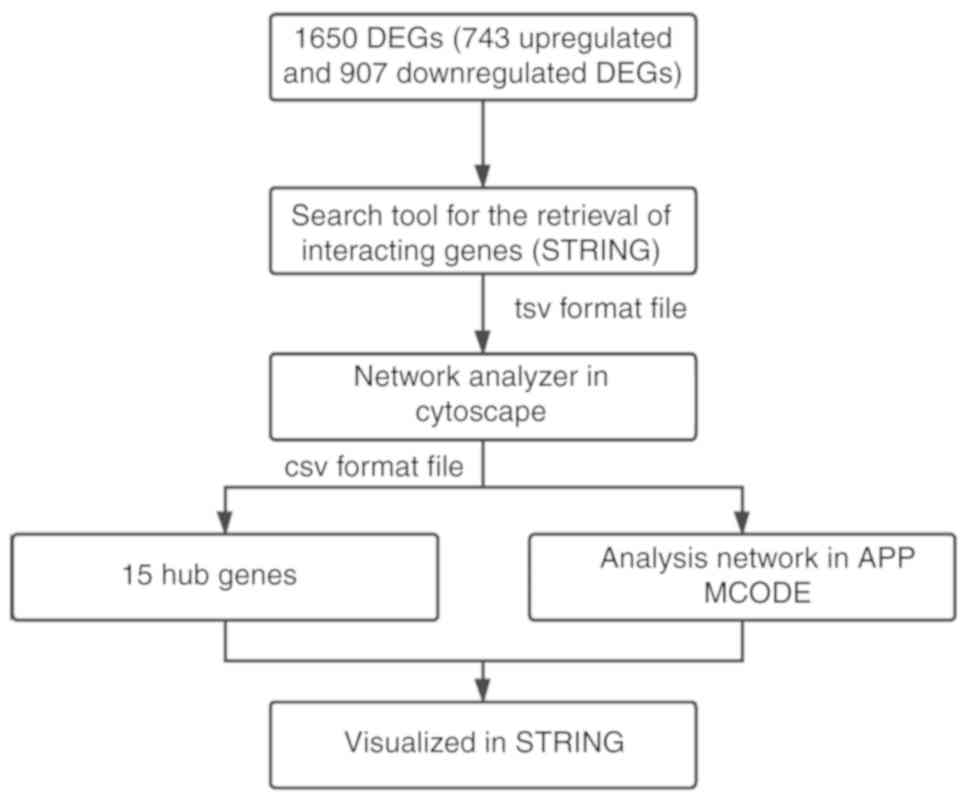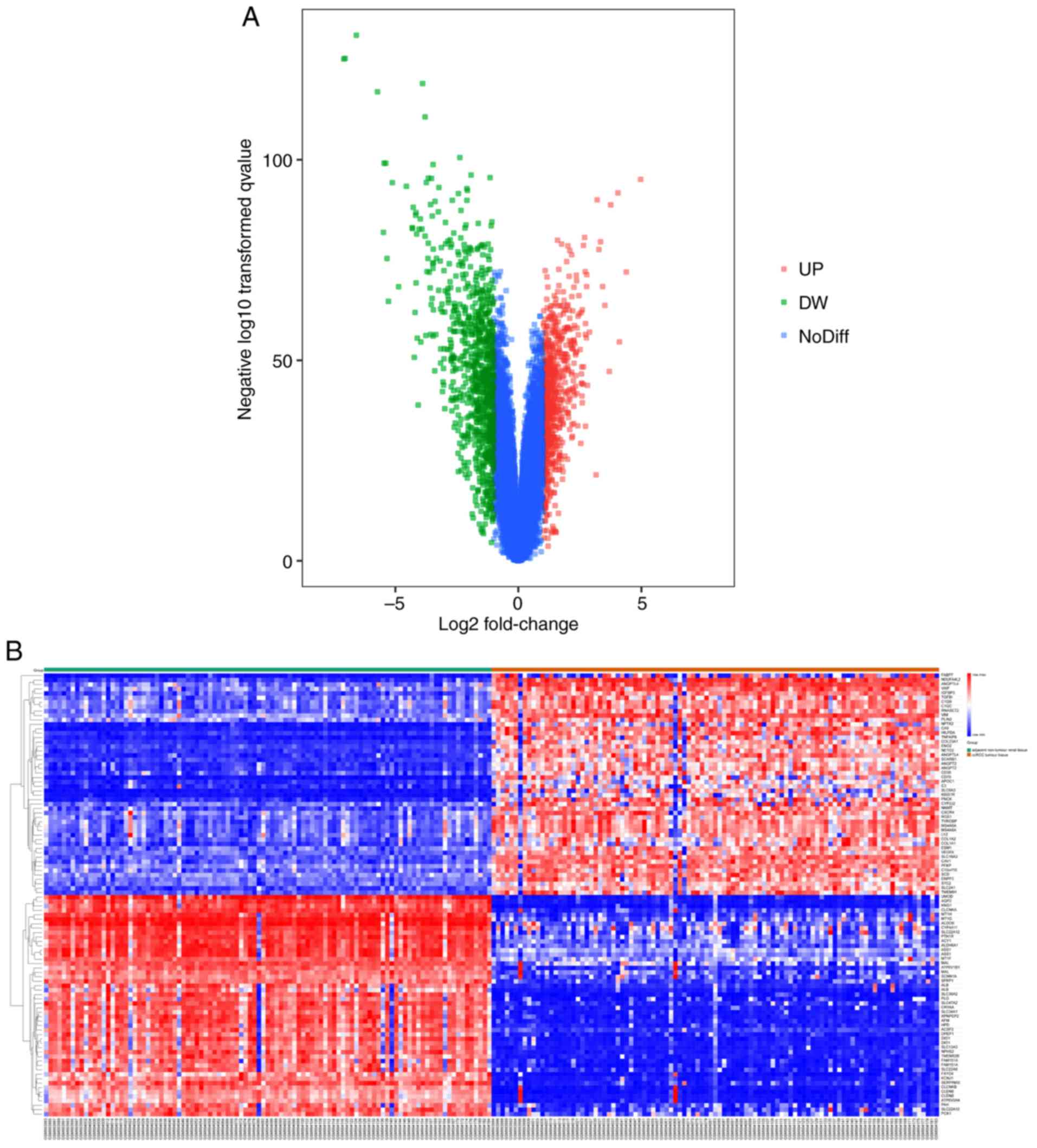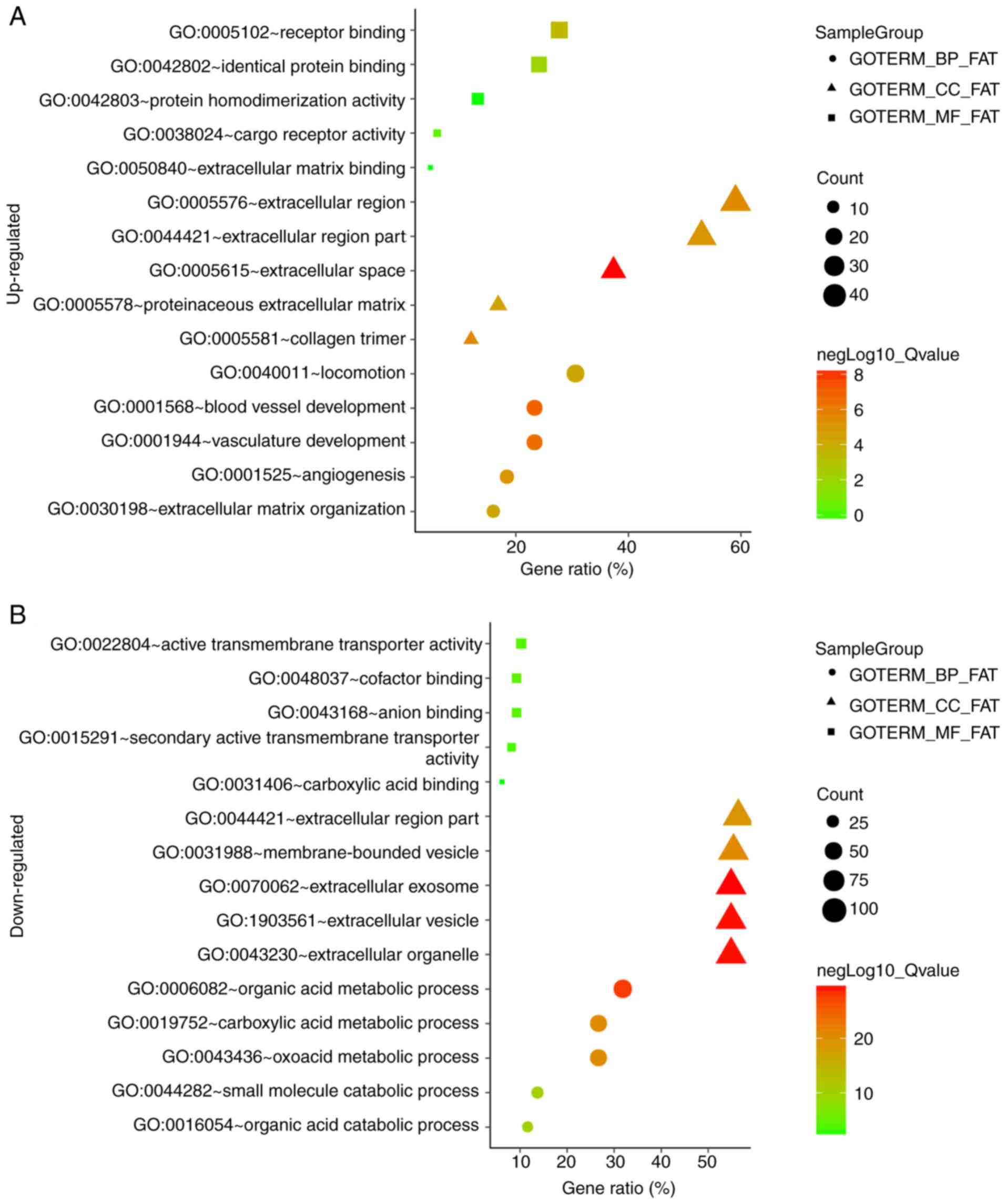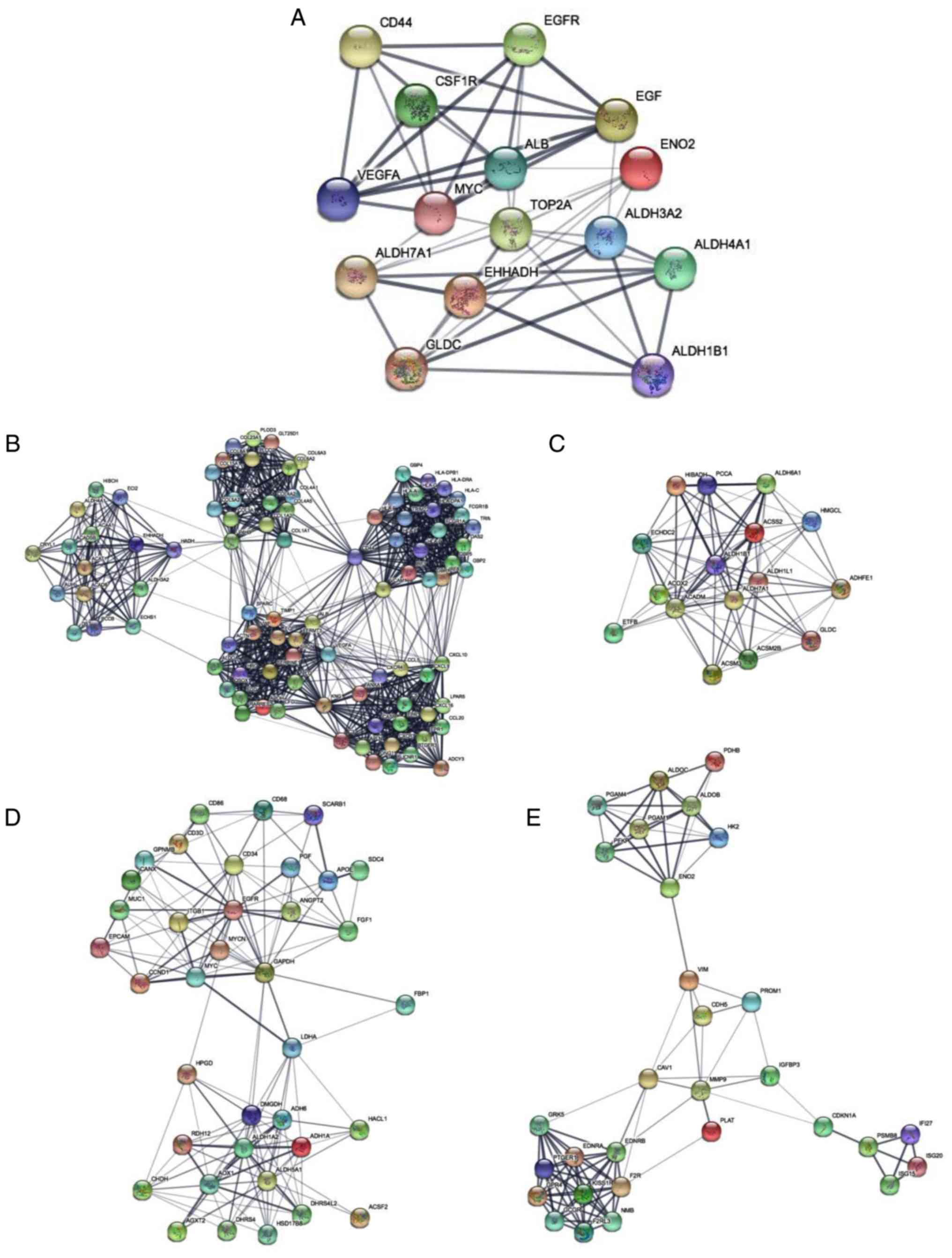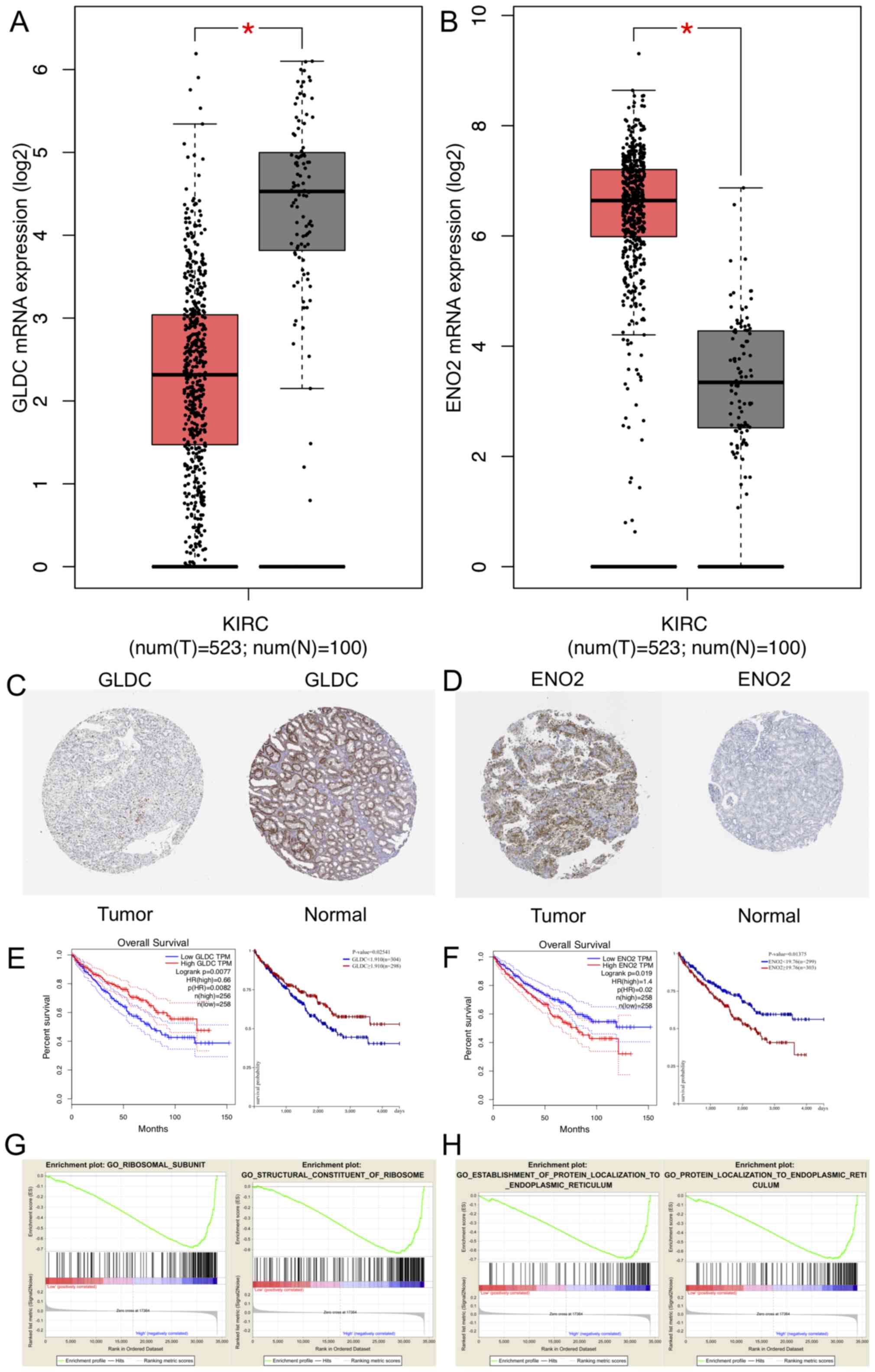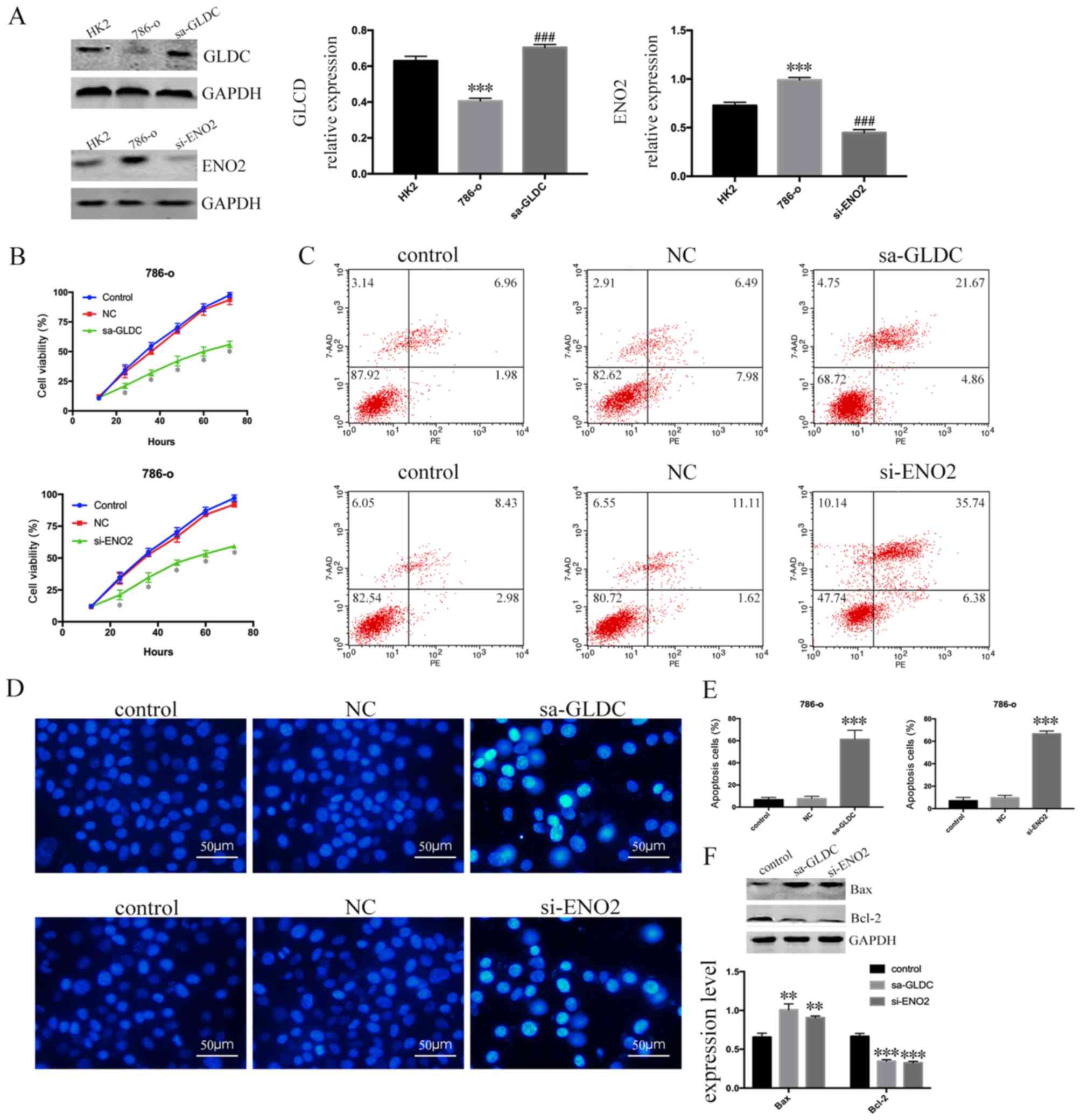|
1
|
Ferlay J, Soerjomataram I, Dikshit R, Eser
S, Mathers C, Rebelo M, Parkin DM, Forman D and Bray F: Cancer
incidence and mortality worldwide: Sources, methods and major
patterns in GLOBOCAN 2012. Int J Cancer. 136:E359–E386. 2015.
View Article : Google Scholar : PubMed/NCBI
|
|
2
|
Patard JJ, Pignot G, Escudier B, Eisen T,
Bex A, Sternberg C, Rini B, Roigas J, Choueiri T, Bukowski R, et
al: ICUD-EAU international consultation on kidney cancer 2010:
Treatment of metastatic disease. Eur Urol. 60:684–690. 2011.
View Article : Google Scholar : PubMed/NCBI
|
|
3
|
Waalkes S, Kramer M, Herrmann TR, Schrader
AJ, Kuczyk MA and Merseburger AS: Present state of target therapy
for disseminated renal cell carcinoma. Immunotherapy. 2:393–398.
2010. View Article : Google Scholar : PubMed/NCBI
|
|
4
|
Siegel RL, Miller KD and Jemal A: Cancer
statistics, 2018. CA Cancer J Clin. 68:7–30. 2018. View Article : Google Scholar : PubMed/NCBI
|
|
5
|
Duran I, Lambea J, Maroto P,
Gonzalez-Larriba JL, Flores L, Granados-Principal S, Graupera M,
Saez B, Vivancos A and Casanovas O: Resistance to targeted
therapies in renal cancer: The importance of changing the mechanism
of action. Target Oncol. 12:19–35. 2017. View Article : Google Scholar : PubMed/NCBI
|
|
6
|
Gassenmaier M, Chen D, Buchner A, Henkel
L, Schiemann M, Mack B, Schendel DJ, Zimmermann W and Pohla H: CXC
chemokine receptor 4 is essential for maintenance of renal cell
carcinoma-initiating cells and predicts metastasis. Stem Cells.
31:1467–1476. 2013. View Article : Google Scholar : PubMed/NCBI
|
|
7
|
Pan Q, Shai O, Lee LJ, Frey BJ and
Blencowe BJ: Deep surveying of alternative splicing complexity in
the human transcriptome by high-throughput sequencing. Nat Genet.
40:1413–1415. 2008. View
Article : Google Scholar : PubMed/NCBI
|
|
8
|
Geng RX, Li N, Xu Y, Liu JH, Yuan FE, Sun
Q, Liu BH and Chen QX: Identification of core biomarkers associated
with outcome in glioma: Evidence from bioinformatics analysis. Dis
Markers. 2018:32159582018. View Article : Google Scholar : PubMed/NCBI
|
|
9
|
Wozniak MB, Le Calvez-Kelm F,
Abedi-Ardekani B, Byrnes G, Durand G, Carreira C, Michelon J,
Janout V, Holcatova I, Foretova L, et al: Integrative genome-wide
gene expression profiling of clear cell renal cell carcinoma in
Czech Republic and in the United States. PLoS One. 8:e578862013.
View Article : Google Scholar : PubMed/NCBI
|
|
10
|
Davis S and Meltzer PS: GEOquery: A bridge
between the gene expression omnibus (GEO) and BioConductor.
Bioinformatics. 23:1846–1847. 2007. View Article : Google Scholar : PubMed/NCBI
|
|
11
|
Thissen D, Steinberg L and Kuang D: Quick
and easy implementation of the benjamini-hochberg procedure for
controlling the false positive rate in multiple comparisons. J Educ
Behav Stat. 27:77–83. 2002. View Article : Google Scholar
|
|
12
|
Barrett T, Troup DB, Wilhite SE, Ledoux P,
Evangelista C, Kim IF, Tomashevsky M, Marshall KA, Phillippy KH,
Sherman PM, et al: NCBI GEO: Archive for functional genomics data
sets-10 years on. Nucleic Acids Res. 39((Database Issue)):
D1005–D1010. 2011. View Article : Google Scholar : PubMed/NCBI
|
|
13
|
Ashburner M, Ball CA, Blake JA, Botstein
D, Butler H, Cherry JM, Davis AP, Dolinski K, Dwight SS, Eppig JT,
et al: Gene ontology: Tool for the unification of biology. The gene
ontology consortium. Nat Genet. 25:25–29. 2000. View Article : Google Scholar : PubMed/NCBI
|
|
14
|
Kanehisa M and Goto SA: KEGG: Kyoto
encyclopedia of genes and genomes. Nucleic Acids Res. 28:27–30.
2000. View Article : Google Scholar : PubMed/NCBI
|
|
15
|
Huang da W, Sherman BT and Lempicki RA:
Systematic and integrative analysis of large gene lists using DAVID
bioinformatics resources. Nat Proto. 4:44–57. 2009. View Article : Google Scholar
|
|
16
|
Szklarczyk D, Franceschini A, Wyder S,
Forslund K, Heller D, Huerta-Cepas J, Simonovic M, Roth A, Santos
A, Tsafou KP, et al: STRING v10: Protein-protein interaction
networks, integrated over the tree of life. Nucleic Acids Res.
43((Database Issue)): D447–D452. 2015. View Article : Google Scholar : PubMed/NCBI
|
|
17
|
von Mering C, Huynen M, Jaeggi D, Schmidt
S, Bork P and Snel B: STRING: A database of predicted functional
associations between proteins. Nucleic Acids Res. 31:258–261. 2003.
View Article : Google Scholar : PubMed/NCBI
|
|
18
|
Shannon P, Markiel A, Ozier O, Baliga NS,
Wang JT, Ramage D, Amin N, Schwikowski B and Ideker T: Cytoscape: A
software environment for integrated models of biomolecular
interaction networks. Genome Res. 13:2498–2504. 2003. View Article : Google Scholar : PubMed/NCBI
|
|
19
|
Carithers LJ and Moore HM: The
genotype-tissue expression (GTEx) project. Biopreserv Biobank.
13:307–308. 2013. View Article : Google Scholar
|
|
20
|
Nagy A, Lánczky A, Menyhárt O and Győrffy
B: Validation of miRNA prognostic power in hepatocellular carcinoma
using expression data of independent datasets. Sci Rep. 8:92272018.
View Article : Google Scholar : PubMed/NCBI
|
|
21
|
Uhlén M, Fagerberg L, Hallström BM,
Lindskog C, Oksvold P, Mardinoglu A, Sivertsson Å, Kampf C,
Sjöstedt E, Asplund A, et al: Proteomics. Tissue-based map of the
human proteome. Science. 347:12604192015. View Article : Google Scholar : PubMed/NCBI
|
|
22
|
Li N, Li L and Chen Y: The identification
of core gene expression signature in hepatocellular carcinoma. Oxid
Med Cell Longev. 2018:34783052018. View Article : Google Scholar : PubMed/NCBI
|
|
23
|
Subramanian A, Tamayo P, Mootha VK,
Mukherjee S, Ebert BL, Gillette MA, Paulovich A, Pomeroy SL, Golub
TR, Lander ES and Mesirov JP: Gene set enrichment analysis: A
knowledge-based approach for interpreting genome-wide expression
profiles. Proc Natl Acad Sci USA. 102:15545–15550. 2005. View Article : Google Scholar : PubMed/NCBI
|
|
24
|
Pelosi G, Fraggetta F, Nappi O, Pastorino
U, Maisonneuve P, Pasini F, Iannucci A, Solli P, Musavinasab HS, De
Manzoni G, et al: Pleomorphic carcinomas of the lung show a
selective distribution of gene products involved in cell
differentiation, cell cycle control, tumor growth, and tumor cell
motility: A clinicopathologic and immunohistochemical study of 31
cases. Am J Surg Pathol. 27:1203–1215. 2003. View Article : Google Scholar : PubMed/NCBI
|
|
25
|
Yan T, Skaftnesmo KO, Leiss L, Sleire L,
Wang J, Li X and Enger PO: Neuronal markers are expressed in human
gliomas and NSE knockdown sensitizes glioblastoma cells to
radiotherapy and temozolomide. BMC Cancer. 11:5242011. View Article : Google Scholar : PubMed/NCBI
|
|
26
|
Murakami N and Riella LV: Co-inhibitory
pathways and their importance in immune regulation.
Transplantation. 98:3–14. 2014. View Article : Google Scholar : PubMed/NCBI
|
|
27
|
Zimpfer A, Glass Ä, Zettl H, Maruschke M,
Hakenberg OW and Erbersdobler A: Renal cell carcinoma diagnosis and
prognosis within the context of the WHO classification 2016.
Urologe A. 58:1057–1065. 2019.(In German). View Article : Google Scholar : PubMed/NCBI
|
|
28
|
Sun C, Yuan Q, Wu D, Meng X and Wang B:
Identification of core genes and outcome in gastric cancer using
bioinformatics analysis. Oncotarget. 8:70271–70280. 2017.PubMed/NCBI
|
|
29
|
Chen B, Jiao Z, Yin X, Qian Z, Gu J and
Sun H: Novel insights into biomarkers associated with renal cell
carcinoma. Oncol Lett. 16:83–90. 2018.PubMed/NCBI
|
|
30
|
Wan B, Huang Y, Liu B, Lu L and Lv C:
AURKB: A promising biomarker in clear cell renal cell carcinoma.
PeerJ. 7:e77182019. View Article : Google Scholar : PubMed/NCBI
|
|
31
|
Kure S, Kato K, Dinopoulos A, Gail C,
DeGrauw TJ, Christodoulou J, Bzduch V, Kalmanchey R, Fekete G,
Trojovsky A, et al: Comprehensive mutation analysis of GLDC, AMT,
and GCSH in nonketotic hyperglycinemia. Hum Mutat. 27:343–352.
2006. View Article : Google Scholar : PubMed/NCBI
|
|
32
|
Rodriguez-Benitez V, Arranz JA, Mata C,
Perez-Navero JL and Gil-Campos M: A new mutation in the GLDC gene
in non-ketotic hyperglycinaemia. An Pediatr (Barc). 80:e7–e8.
2014.(In Spanish). PubMed/NCBI
|
|
33
|
Khraim W, Abu-Libdeh B, Ayesh S and
Dweikat I: Clinical heterogeneity of glycine encephalopathy in
three Palestinian siblings: A novel mutation in the glycine
decarboxylase (GLDC) gene. Brain Dev. 39:601–605. 2017. View Article : Google Scholar : PubMed/NCBI
|
|
34
|
Min HL, Kim J, Kim WH, Jang BG and Kim MA:
Epigenetic silencing of the putative tumor suppressor gene GLDC
(Glycine Dehydrogenase) in gastric carcinoma. Anticancer Res.
36:179–187. 2016.PubMed/NCBI
|
|
35
|
Kim SK, Jung WH and Koo JS: Differential
expression of enzymes associated with serine/glycine metabolism in
different breast cancer subtypes. PLoS One. 9:e1010042014.
View Article : Google Scholar : PubMed/NCBI
|
|
36
|
Berezowska S, Galván JA, Langer R,
Bubendorf L, Savic S, Gugger M, Schmid RA and Marti TM: Glycine
decarboxylase and HIF-1α expression are negative prognostic factors
in primary resected early-stage non-small cell lung cancer.
Virchows Arch. 470:323–330. 2017. View Article : Google Scholar : PubMed/NCBI
|
|
37
|
Zhang WC, Shyh-Chang N, Yang H, Rai A,
Umashankar S, Ma S, Soh BS, Sun LL, Tai BC, Nga ME, et al: Glycine
decarboxylase activity drives non-small cell lung cancer
tumor-initiating cells and tumorigenesis. Cell. 148:259–272. 2012.
View Article : Google Scholar : PubMed/NCBI
|
|
38
|
Zhang T, Niu X, Liao L, Cho EA and Yang H:
The contributions of HIF-target genes to tumor growth in RCC. PLoS
One. 8:e805442013. View Article : Google Scholar : PubMed/NCBI
|
|
39
|
Isgro MA, Bottoni P and Scatena R:
Neuron-specific enolase as a biomarker: Biochemical and clinical
aspects. Adv Exp Med Biol. 867:125–143. 2015. View Article : Google Scholar : PubMed/NCBI
|
|
40
|
Vizin T and Kos J: Gamma-enolase: A
well-known tumour marker, with a less-known role in cancer. Radiol
Oncol. 49:217–226. 2015. View Article : Google Scholar : PubMed/NCBI
|
|
41
|
Luo T, Chen X, Zeng S, Guan B, Hu B, Meng
Y, Liu F, Wong T, Lu Y, Yun C, et al: Bioinformatic identification
of key genes and analysis of prognostic values in clear cell renal
cell carcinoma. Oncol Lett. 16:1747–1757. 2018.PubMed/NCBI
|
|
42
|
Liu CC, Wang H, Wang WD, Wang L, Liu WJ,
Wang JH, Geng QR and Lu Y: ENO2 promotes cell proliferation,
glycolysis, and glucocorticoid-resistance in acute lymphoblastic
leukemia. Cell Physiol Biochem. 46:1525–1535. 2018. View Article : Google Scholar : PubMed/NCBI
|
|
43
|
Laviolette LA, Mermoud J, Calvo IA, Olson
N, Boukhali M, Steinlein OK, Roider E, Sattler EC, Huang D, The BT,
et al: Negative regulation of EGFR signalling by the human
folliculin tumour suppressor protein. Nat Commun. 8:158662017.
View Article : Google Scholar : PubMed/NCBI
|
|
44
|
Huang J, Wang X, Wen G and Ren Y:
MiRNA2055p functions as a tumor suppressor by negatively regulating
VEGFA and PI3K/Akt/mTOR signaling in renal carcinoma cells. Oncol
Rep. 42:1677–1688. 2019.PubMed/NCBI
|
|
45
|
Roskoski R Jr: Vascular endothelial growth
factor (VEGF) and VEGF receptor inhibitors in the treatment of
renal cell carcinomas. Pharmacol Res. 120:116–132. 2017. View Article : Google Scholar : PubMed/NCBI
|
|
46
|
Trevisani F, Larcher A, Cinque A,
Capitanio U, Ripa F, Vago R, Bettiga A, Benigni F, Carenzi C,
Muttin F, et al: The association of uromodulin genotype with renal
cancer aggressiveness. Eur Urol Focus. 5:262–265. 2019. View Article : Google Scholar : PubMed/NCBI
|
|
47
|
Liao SY, Aurelio ON, Jan K, Zavada J and
Stanbridge EJ: Identification of the MN/CA9 protein as a reliable
diagnostic biomarker of clear cell carcinoma of the kidney. Cancer
Res. 57:2827–2831. 1997.PubMed/NCBI
|
|
48
|
Li G, Cuilleron M, Cottier M,
Gentil-Perret A, Lambert C, Genin C and Tostain J: The use of
MN/CA9 gene expression in identifying malignant solid renal tumors.
Eur Urol. 49:401–405. 2006. View Article : Google Scholar : PubMed/NCBI
|
|
49
|
Li G, Cuilleron M, Gentil-Perret A,
Cottier M, Passebosc-Faure K, Lambert C, Genin C and Tostain J:
Rapid and sensitive detection of messenger RNA expression for
molecular differential diagnosis of renal cell carcinoma. Clin
Cancer Res. 9:6441–6446. 2003.PubMed/NCBI
|
|
50
|
Li G, Feng G, Gentil-Perret A, Genin C and
Tostain J: Serum carbonic anhydrase 9 level is associated with
postoperative recurrence of conventional renal cell cancer. J Urol.
180:510–514. 2008. View Article : Google Scholar : PubMed/NCBI
|
|
51
|
Ueda T, Sakagami H, Abe K, Oishi I, Maruo
A, Kondo H, Terashima T, Ichihashi M, Yamamura H and Minami Y:
Distribution and intracellular localization of a mouse homologue of
Ca2+/calmodulin-dependent protein kinase Ibeta2 in the nervous
system. J Neurochem. 73:2119–2129. 1999.PubMed/NCBI
|
|
52
|
Wu S, Lv Z, Wang Y, Sun L, Jiang Z, Xu C,
Zhao J, Sun X, Li X, Hu L, et al: Increased expression of pregnancy
up-regulated non-ubiquitous calmodulin kinase is associated with
poor prognosis in clear cell renal cell carcinoma. PLoS One.
8:e599362013. View Article : Google Scholar : PubMed/NCBI
|















